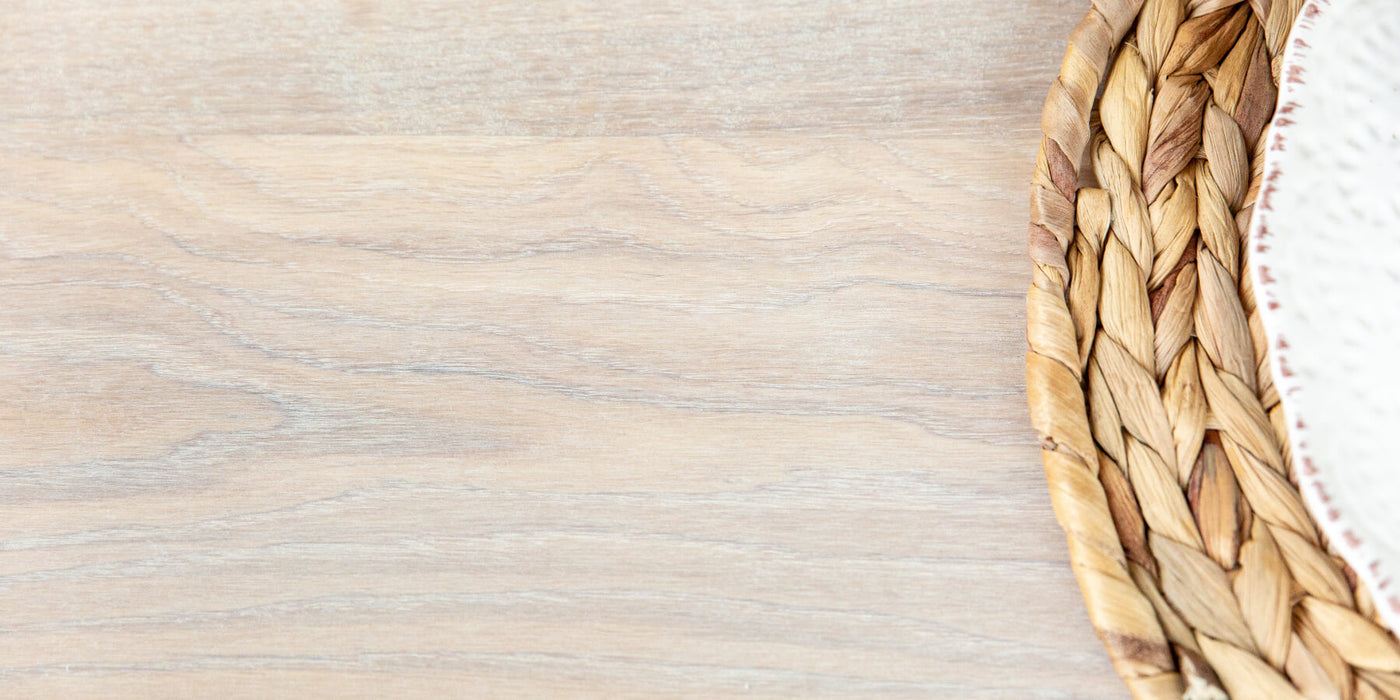Rubio Monocoat is known for its wide range of colors available in the Oil Plus 2C product. At the time this article is written, there are 55 colors available.
Whitish wood stain colors are trending currently.
If you are making wood stain color samples and not sure what white color to choose, here is the scoop on all of Rubio Monocoat’s light/white colors.
Available light colors
The four whitest colors for Oil Plus 2C are: White 5%, White, Cotton White, and Super White.
Five slightly “off-white” colors leaning a bit more to the greyish side are: Smoke 5%, Smoke, Mist 5%, Mist, and DC Smoke.
Lastly, a "whitish" color that leans a bit to the creamy/yellowish side is the color Natural.

What are the differences between the Rubio Monocoat light/white colors?
Pigment differences
There are 2 major factors that influence each color.
- Pigment color: the color of the pigment in the oil
- Pigment load: the amount of pigment in the oil
The difference between the light Rubio Monocoat colors is simply different pigment color, different pigment load or a combination of the two.
It is obvious that the different color names have different pigment color in them. But it is also helpful to know that a color with "5%" in the name means that it has less pigment load than its parent color. Additionally, there is one color, DC Smoke, where the DC stands for "double content" of the pigment load found in its parent color, Smoke.
For example, White 5% allows more of the wood to remain seen than the color White (which has roughly twice the pigment load). The same goes for the Smoke 5% and Mist 5% vs. the color Smoke and Mist.
These 5% Oil Plus 2C colors are ideal for application on wood with a ring porous wood (open grain) like Oak, Ash and Elm when you desire just a hint of color in the grain but still want to see the true color of the wood species on the areas between the open grain (latewood).
The below image shows the white colors side-by-side applied, and as you may see, the color "Cotton White" has the highest pigment load when comparing those four white colors.

Four white wood finish color samples shown on Mahogany. Left is normal, right is water-popped.
The affect of wood species on color
The way each white color appears on wood is dependent on the color of the wood species it is applied to. For example, when used on a whitish wood species like maple or birch, the differences do not appear as dramatic as when applied on a darker wood color. See the differences on the images below where we are looking at birch plywood and a plank of mahogany. The mahogany is darker and shows the variations (the pigment load of white pigment) much more than on the birch plywood.
Light color wood finish samples shown on birch wood. Left is normal, right is water-popped.
Light color wood finish samples shown on mahogany. Left is normal, right is water-popped.
Water-popping
Another option, if you desire more options in the white level (or what we sometimes refer to as “opaqueness” or "chalkiness"), is to water-pop the sanded wood. This process opens the wood grain more and allows more pigment to penetrate the wood. More pigment means more intense color.
Check out what water-popping looks like on the right side of each color sample above.
Additional creative opportunities
Keep in mind everything we have discussed so far is accomplished using only one application of finish. That single application gives you color and protection!
If for some reason, you cannot achieve the desired white color using only Oil Plus 2C color, than Rubio Monocoat still has an alternative option.
You may first apply an application of Precolor Easy, which offers three white colors: Nordic White, Alpaca White, and Mint White.
Precolor Easy is a waterborne pre-treatment option that requires to be finished with Oil Plus 2C. Nordic White is the whitest in color while Alpaca White is a bit more of a greyish white. Mint White has a touch of green added to it, so it appears like a very light green/white color in the can. Why green? More on that below.
The whitest wood finish possible
That is an easy one, but it requires 2 steps.
The whitest look achievable using Rubio Monocoat uses Precolor Easy "Nordic White" as a stain followed by Oil Plus 2C "Super White" as the finish.
Neutralizing the red in Red Oak
The below image shows the effect of adding a hint of green to a Red Oak (northern) panel. The Mint White color is used to create a white base that neutralizes the pink undertones of the red oak. This is why green is added to the white since the opposing color of red is green. Therefore, it helps to neutralize the red tones.

Red Oak first stained with Precolor Easy "Mint White" then finished using Oil Plus 2C "Cotton White"
Next, I applied Oil Plus 2C "Cotton White" over the entire panel. As you see, this application of Precolor Easy & Oil Plus 2C gives an excellent white color. Just by itself, the Cotton White appears as a pinkish white. Even if I had water-popped the Red Oak panel, it would not have been as white due to the red Oak base color.
Cerusing
Cerused looks with a light base color look great and are always a show stopper. If you are unfamiliar with the term, you can read about cerusing here. There is a great example of a cerused look using Nordic White and a custom dark finish to make the grain pop without sacrificing the light look of the wood board.
As always, please do not hesitate to contact us with any questions you may have regarding




